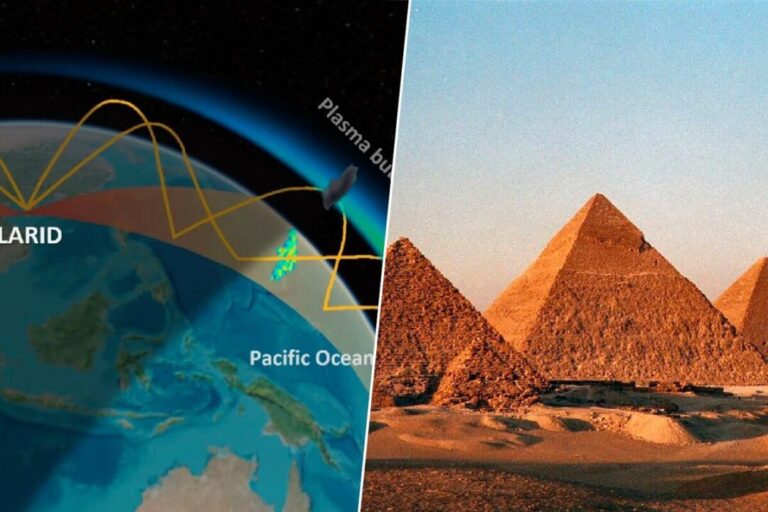
For centuries, humanity has gazed up at the night sky in awe, wondering about the vastness of the cosmos. We’ve launched telescopes, sent satellites, and landed probes to uncover the secrets of the universe. Yet, even with all our advancements, a new cosmic mystery has emerged—one that’s both fascinating and unnerving. According to astrophysicists, our entire galaxy — along with countless others — is being pulled toward an enormous, invisible force. And there’s no escaping it.
This strange phenomenon has captured the attention of scientists around the world. It’s not a science fiction scenario but a real cosmic event unfolding at unimaginable scales. The force in question is not a black hole or a known celestial body—it’s something much more elusive. Referred to as the “Great Attractor,” this colossal entity is warping the motion of galaxies across the universe, including our own Milky Way.
What Is the Great Attractor?
The Great Attractor is a gravitational anomaly located in the direction of the Centaurus and Hydra constellations. First detected in the 1970s and 1980s, this mysterious region of space appears to be exerting a powerful gravitational pull on everything within a radius of hundreds of millions of light-years. Despite our best efforts, the Great Attractor remains largely hidden behind the dense plane of our own galaxy, in an area called the “Zone of Avoidance.”
Telescopes can’t clearly see into this region because it’s obscured by the gas, dust, and stars of the Milky Way. However, its gravitational influence is undeniable. Galaxies, including ours, are speeding toward this unseen mass at a rate of over two million kilometers per hour. That’s faster than the expansion of the universe in some regions—raising questions that defy our current understanding of cosmic dynamics.
We’re Not Alone in the Drift
The Milky Way isn’t alone in this gravitational journey. Astronomers have observed that countless other galaxies in our local supercluster, Laniakea, are also moving toward the same destination. Laniakea itself is a massive structure, home to over 100,000 galaxies, and it too is being influenced by the Great Attractor.
What’s even more intriguing is that some scientists believe the Great Attractor may be part of an even larger structure—possibly the Shapley Supercluster, one of the most massive known concentrations of galaxies in the nearby universe. It could be that this supercluster, or something beyond it, is the true source of the gravitational pull.
The Invisible Tug of Gravity

The concept of being dragged through space by an invisible force may sound unsettling, but gravity works in mysterious ways at cosmic scales. In everyday life, we understand gravity as the force that keeps our feet on the ground. But in the universe, it shapes the motion of galaxies, bends light, and even affects the passage of time.
The Great Attractor is thought to contain a massive amount of dark matter—an invisible substance that doesn’t emit or absorb light but exerts gravitational force. Scientists estimate that dark matter makes up about 85% of the universe’s mass, yet we’ve never directly observed it. Its presence is inferred by how it influences visible matter, such as stars and galaxies.
In the case of the Great Attractor, dark matter could be the driving force behind the enormous gravitational pull. But without direct observation, much of this remains theoretical.
Why We Can’t Escape
One might wonder, “If we’re being pulled in, can we escape?” The answer, unfortunately, is no. On cosmic scales, we are but passengers on a vast galactic ship with no steering wheel. Our solar system, Earth included, is part of the Milky Way galaxy. The galaxy itself is in motion, influenced by larger cosmic structures. This motion is dictated by gravitational forces so immense that they operate over distances of hundreds of millions of light-years.
Even more sobering is the fact that the universe’s expansion doesn’t override the local effects of gravity in dense regions. While most of the universe is expanding—galaxies moving away from each other—in gravitationally bound areas like superclusters, the pull of gravity dominates. So, we remain on a collision course with the Great Attractor, and there’s nothing we can do to stop it.
What This Means for Us
While the idea of being pulled toward a mysterious cosmic force may sound alarming, it’s important to understand that this journey is happening over billions of years. It won’t affect our daily lives or threaten Earth in any direct way. Instead, it challenges our understanding of the cosmos and forces us to ask deeper questions about the nature of the universe.
Are there more Great Attractors out there? Could this invisible force teach us more about dark matter or even lead to new physics? These are the questions that keep astrophysicists searching and studying, expanding the frontier of human knowledge.
Conclusion
The universe is a vast, dynamic place full of wonders we’re only beginning to comprehend. The discovery of a giant invisible force pulling entire galaxies — including our own — serves as a humbling reminder of how small we are in the cosmic scheme of things. But it also inspires awe. It shows that the universe is still full of mysteries waiting to be unraveled, and each discovery brings us one step closer to understanding our place in the cosmos.



